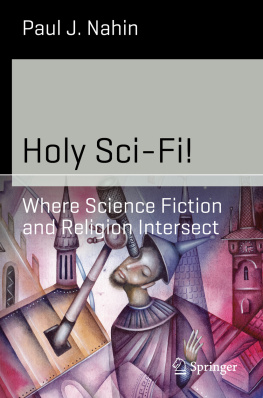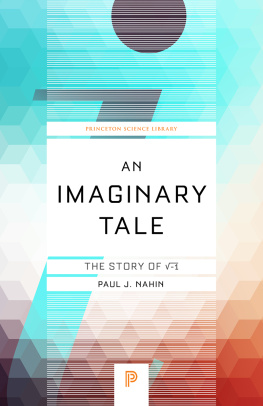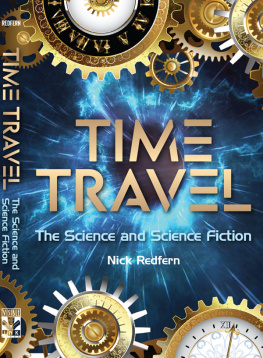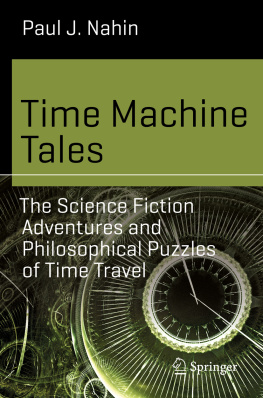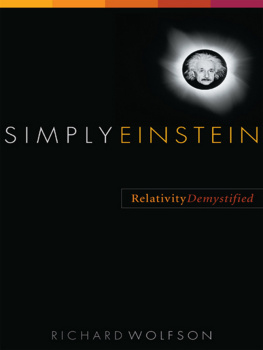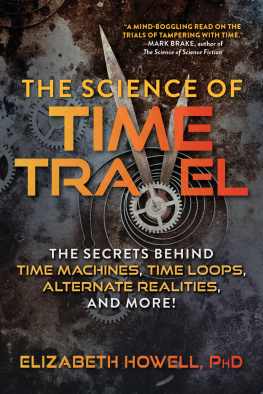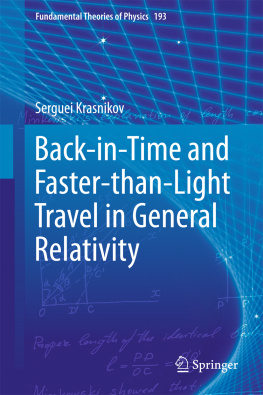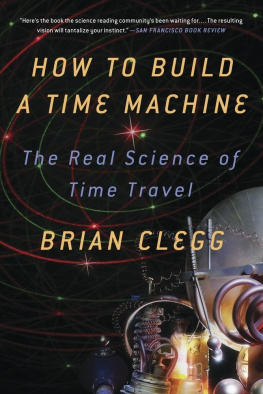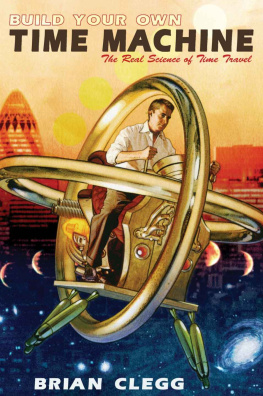Time Travel
Time Travel
A Writers Guide to the Real
Science of Plausible Time Travel
Paul J. Nahin

1997, 2011 Paul J. Nahin
All rights reserved. Published 2011
Printed in the United States of America on acid-free paper
9 8 7 6 5 4 3 2 1
First published in 1997 by Writers Digest Books
The Johns Hopkins University Press
2715 North Charles Street
Baltimore, Maryland 21218-4363
www.press.jhu.edu
Library of Congress Control Number: 2010938406
ISBN 13: 978-1-4214-0082-2
ISBN 10: 1-4214-0082-0
A catalog record for this book is available from the British Library.
Special discounts are available for bulk purchases of this book.
For more information, please contact Special Sales at 410-516-6936 or specialsales@press.jhu.edu.
The Johns Hopkins University Press uses environmentally friendly book materials, including recycled text paper that is composed of at least 30 percent post-consumer waste, whenever possible. All of our book papers are acid-free, and our jackets and covers are printed on paper with recycled content.
For my four beautiful grandchildren, Rebecca in Michigan, and Erik, Lauren, and Courtney in New Hampshire, for whom I hope that these words from Tennysons Locksley Hallwords that someday might be spoken by a time travelerwill prove to be prophetic:
For I dipt into the future,
Far as human eye could see,
Saw the Vision of the world,
And all the wonder that would be.
CONTENTS
The science of time travel.
.
The difference between science fiction and fantasy.
.
CHAPTER 1
Time Travel in the Pulps
A brief history of time travel as it was written in the Golden Age of science fiction.
CHAPTER 2
Special Relativity and Time Travel to the Future
An explanation of Einsteins special theory of relativity and why it indicates that time travel may be possible.
CHAPTER 3
Time Travel to the Past
A look at the scientific groundwork upon which time travel theory is constructed.
CHAPTER 4
Hyperspace
The concept of dimension and why we live in a world of at least three spatial dimensions.
CHAPTER 5
Time as the Fourth Dimension
A look at how time moves and how it can be considered as a spatial dimension.
CHAPTER 6
The Block Universe
Philosophy and science are uneasy neighbors in the block universe.
CHAPTER 7
When General Relativity Made Time Travel Honest
How Gdel found what Einstein had overlooked and put forth his own view of time travel.
CHAPTER 8
Paradoxes: Changing the Past, Causal Loops, and Sex
An overview of time travel paradoxes and why most of them are invalid.
CHAPTER 9
Time Machines that Physicists Have Already Invented
Theoretical paper time machines and how they might work.
CHAPTER 10
Faster-Than-Light (FTL) Into the Past
The theory of sending information forward or backward in time.
CHAPTER 11
Quantum Gravity, Splitting Universes, and Time Machines
Contemporary physicists have a few new ways of looking at time travel.
CHAPTER 12
Reading the Physics Literature for Story Ideas
These technical journals are available in academic libraries, or at any college or university with a physics department, and can be scanned for the latest results in time machine physics and fresh story ideas.
PREFACE
It is so very sad to see some valuable minds writing such a pile of unmitigated bullshit.
one physicists unhappy reaction to the proposal of two other physicists that the Higgs boson could ripple backward through time and stop the Large Hadron Collider before it could make the particle in the first place (quoted from Physics World, December 2009).
Clearly not all physicists have accepted the possibility of traveling through time into the past. Other highly respected physicists do take the idea of backward time travel quite seriously. Richard Gott at Princeton, Frank Tipler at Tulane, and Kip Thorne at Caltech are perhaps the three best-known examples, with each having invented (on paper, not in their basements!) time machines that are discussed in this book: Gotts cosmic strings, Tiplers rotating cylinder, and Thomes wormhole.
Even Stephen Hawking, who has not been shy about expressing his belief that time travel is nonsense, admits that his objections are of a gut-feel nature, and that there is nothing in known physics that actually forbids time travel into the past. The unavoidable violation of the conservation of energy is the fatal flaw in the construction of a perpetual motion machine, for example, but there are no known conservation laws that a time machine would necessarily violate. A story that uses time travel as part of its plot is, therefore, not to be automatically rejected as being simply an adult fantasy just because it includes time travel.
Time travel has long been a central concept in science fiction, but, in the past twenty years, it has also become a hot topic in physics. Serious scientists, on both sides of the issue, have been engaged in highly analytical discussions about time travel. It is ironic, then, that the very first truly modern time travel storythat is, a story based on plausible sciencewas written more than 115 years ago, a full decade before Albert Einstein published the special theory of relativity (with its four dimensional space-time that theoretically allows, without controversy, travel into the arbitrarily far future) and two decades before Einsteins general theory and its warped space-time, the scientific basis for gravity (and for time travel into the past). I am, of course, referring to H.G. Wells (1866-1946), who was just twenty-eight when The Time Machine appeared (in serial form, starting January 1895) in the New Review. Wellss great contribution with The Time Machine was to make the science part of science fiction important. For Wells, the scientific basis for time travel wasnt the yet-to-be-discovered warped Einsteinian space-time but instead a much less sophisticated view of the fourth dimension.
Other writers contemporary with Wells wrote of time travel, too, but their works were based on such nonscientific literary devices as sleeping into the future as in Grant Allens British Barbarians (published the same year as The Time Machine), or traveling into the past via a knock on the head from a crowbar as in Mark Twains A Connecticut Yankee in King Arthurs Court (1889), or by some other equally curious mechanism. Wells, in contrast, used a purposefully designed machine for travel along the time (not a spatial) dimension. There is a problem with Wellss time machine (a difficulty discussed in this book), but its a subtle one. And so, astonishingly, Wells would not have to read this book, even though he was at a distinct disadvantage by writing years before Einstein, because with that single exception he still got everything else right from a modern scientific point of view! Or, at least, he didnt get anything wrong. Thats why I want to talk, here, just a bit more about the remarkable genius of Herbert George Wells than I did in the original edition of this book.
Next page


